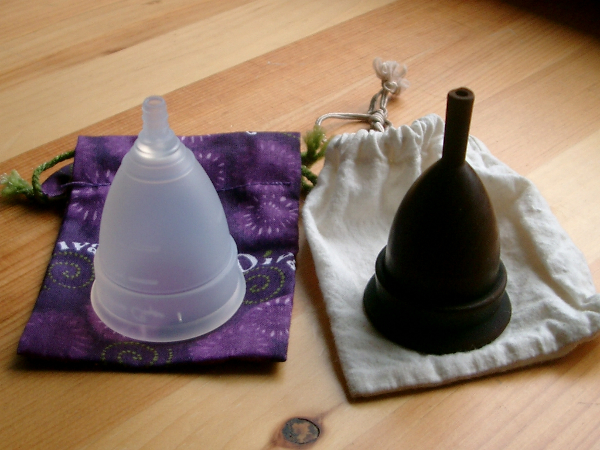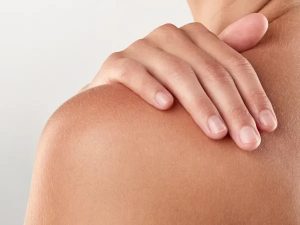Natural menstrual products - introduction

Pic: Michelle Tribe [CC BY 2.0]
“Some called it Eve’s curse but she thought that was stupid, and the real curse of Eve was having to put up with the nonsense of Adam, who as soon as there was any trouble, blamed it all on her.” – Margaret Atwood
“Products that are reusable or use natural, biodegradable materials can make a big impact. It’s also not a hard switch. You don’t need to go straight to reusable pads and menstrual cups. There are eco-friendly options that look and work just like the items you currently use.” – Lisa Sharp
Contents
What are natural menstrual products?
Natural menstrual products are non-disposable products that don’t contain the cocktail of synthetic chemicals that most commercial menstrual products do. Non-organic, disposable products are relatively new, of course, and before the 20th century, all menstrual products were natural. According to the Museum of Menstruation, around 1550 BC, Egyptian women were using folded pieces of lint as tampons; in Mediterranean countries sponge ‘tampons’ have long been popular; and of course our grandmothers would have used what may have been termed ‘rags’ which were usually folded pieces of cloth.

Washable, organic cloth pads.
Modern alternatives to standard disposable pads, panty liners and tampons include:
- washable pads and panty liners – pads can be either all-in-ones or two-part (a holder with inserts, so that you can choose the thickness of pad). Pads can be patterned or plain, but the patterned ones tend not to be organic. Panty liners are for lighter days at the beginning and end of a period.
- belted pads – for night-time use, and for periods of particularly heavy flow, for example after birth; increased thickness of washable material can be inserted.
- menstrual cups – inserted into the vagina to catch menstrual blood. Some are disposable, but of course we’d recommend reusable cups. They can be made of natural rubber, or silicone.
- sponge tampons – natural sponge has been used for tampons for hundreds if not thousands of years; only green if the sponge is harvested sustainably, i.e. leaving the roots intact to grow again. It’s an industry that has been around for generations, and they know that over-harvesting will destroy their livelihood.
She tried every sustainable menstrual product, so you don’t have to.
What are the benefits of natural menstrual products?
Environmental
Because women can have a menstruation span of around 40 years, if they use disposable products, that’s an awful lot of waste and unnecessary use of resources, energy, transport etc, with all the associated pollution and habitat destruction. Four million tampons and pads are thrown away every day in the UK, adding to marine pollution and landfill. It takes a tampon six months to biodegrade; a plastic sanitary towel liner lasts indefinitely. Standard tampons are made from either cotton, or a mixture of cotton and rayon. Use of non-organic cotton of course raises issues of fair trade, pesticide use and genetic modification. Rayon is chemically processed from wood pulp.
Health
Disposable pads and liners are made from wood pulp, which is brown / beige. This won’t do of course – it has to be white, never mind that to get it white involves chlorine bleaching. Chlorine bleaching is one of the main sources of highly-toxic dioxins in the environment. Dioxins accumulate in the food chain and cause birth defects, immune system damage, miscarriages and cancer. But never mind, it has to be white. Campaigning by the Women’s Environmental Network has resulted in chlorine gas being largely replaced with chlorine dioxide or hydrogen peroxide for bleaching – which is better, but not bleaching at all seems not to be an option for most large commercial manufacturers however. Never mind – here’s an opportunity to boycott them.

Menstrual cup.
Cloth pads and panty liners, menstrual cups and sponges are free from bleaches, irritants and chemicals and so are much better for you. Do you really want products containing traces of pesticides and bleaches next to your bits?
According to Tampon Alert, rayon, found in most standard tampons, is the material most associated with toxic shock syndrome.
Financial
The average woman in the Western world uses about 12-17,000 sanitary products during her life (and with the increased use of panty liners this figure has probably grown). In the UK we buy more than three billion disposable sanitary items every year, spending over half a billion pounds a year on them. Prices of natural menstrual products are higher, but because you don’t have to keep buying them, you save a lot of money in the long run.
Other
If you’re going travelling, you don’t have to pack a lot of disposable products – just take your favourite reusable products and wash them as you go.

Unbleached sponge and bag.
What can I do?
Well, maybe just experiment with organic, non-disposable products for a few months to see which product, or combination of products works best for you. You could even start just by using natural menstrual products at home until you get used to them.
Cloth pads and panty liners
There are lots out there when you start looking. These really took off in the US and Canada about 20 years ago and have become very popular in the UK over the last 5 years. Check the fabrics – there are organic products out there, and lots are hand-made. Many websites sell funky patterned pads made from different fabrics – even polyester, which isn’t breathable. Cotton is the way to go. Also look at the different ranges and sizes – some pads have a system which allows you to add more cloth for heavier flow days, and there are different types of pads such as panty liners for light days, longer, more absorbent or belted pads for night-time use (and after birth) and some have various different absorbent fabrics – e.g. towelling or hemp which are more absorbent than cotton.
Things no-one tells you about menstrual cups.
Soak pads for a couple of hours before washing; and don’t waste the water, use it on the garden – the plants will love the nutrients from the blood.
If you’re up for it, you can even make your own sanitary pads (see resources for our links page).
Menstrual cups
If you prefer to use tampons, invest in a menstrual cup or sponges. There are many menstrual cups on the market; avoid coloured cups that may have dyes made from processed chemicals. You can buy cups made from natural rubber, but some people may be allergic to rubber, in which case there are cups made from medical-grade silicone. Bear in mind that cheaper brands are made from lower-grade silicone.

Belted pad. Image: Obsidian Star
Be sure to choose the correct size. Cups come in 2 sizes – one for women under 30, who haven’t had a vaginal birth and one for women over 30, or who have had a vaginal birth.
Cups come with instructions, and can be used in combination with pads, in case of spillage. One reusable cup can be all you need for up to ten years.
Sponges
You’ll need one or two sponges a day, and after use they can be rinsed out and then soaked overnight in boiling water with a few drops of tea tree oil, and then air dried. Each sponge lasts about a year, and when you’ve finished with it, it can be composted.
Specialist(s)
Thanks to Rachael Hertogs of Moontimes for information.
The specialist(s) below will respond to queries on this topic. Please comment in the box at the bottom of the page.
 Joanne Callan runs Moontimes, producing and selling reusable menstrual products, helping women of all ages to connect with their menstrual cycle and their bodies. Moontimes is part of Changing Cycles, a social enterprise set up to educate, empower & support women of all ages to understand the physical emotional and energetic aspects of their menstrual cycle & to share this wisdom with men.
Joanne Callan runs Moontimes, producing and selling reusable menstrual products, helping women of all ages to connect with their menstrual cycle and their bodies. Moontimes is part of Changing Cycles, a social enterprise set up to educate, empower & support women of all ages to understand the physical emotional and energetic aspects of their menstrual cycle & to share this wisdom with men.


5 Comments
Great post…
this is great, the last time i heard about it i was about 10 years old when my mother and her friend were talking about reusable pads.
I switched to reusable period products about 4 years ago – thanks to this page – and I would never look back! I feel so much cleaner when I use them – contrary to popular belief – and it has made me get in touch with my body too. I still very occasionally use tampons when I go swimming (if my flow is light then I don’t use anything at all and have never had a problem); I haven’t found a menstrual cup that is small enough not to hurt me. Now I have re-read about sponges, I might look into them as they seem like a good idea, although I want to do a bit more research first, having grown up never buying sponges, for ecological reasons.
Thanks for another great article!
Glad to be of help Sarah
I love cloth pads, so much more comfortable. I used sponges once, and just be aware they can cause a severe yeast infection in a susceptible person.